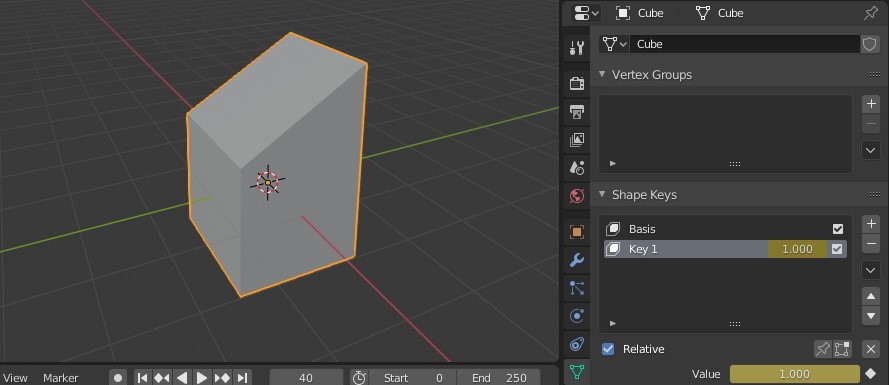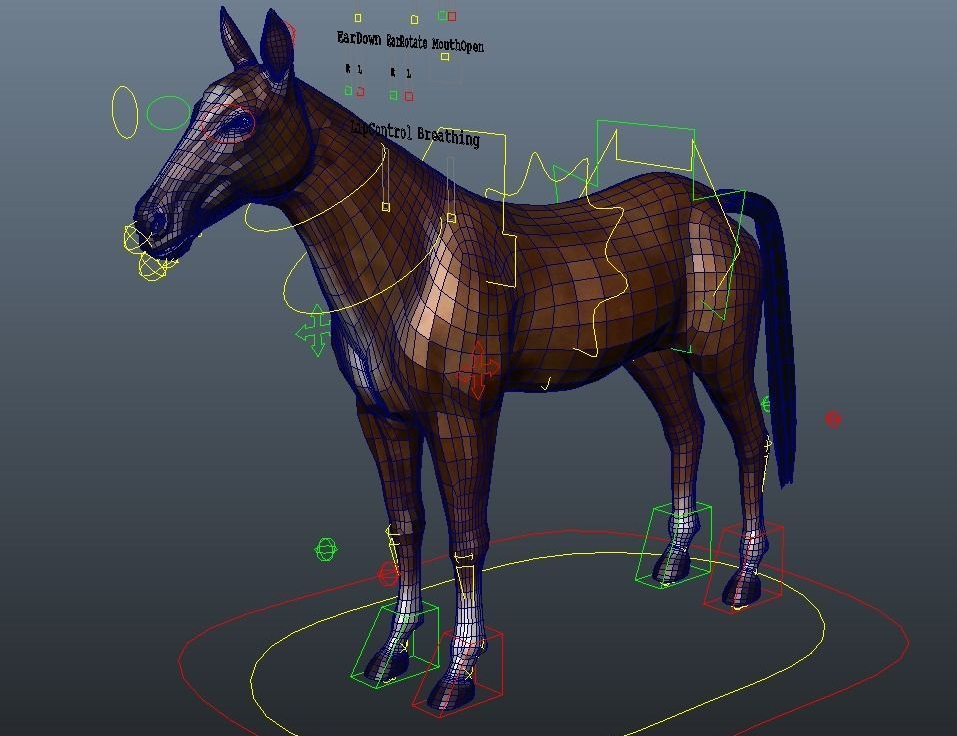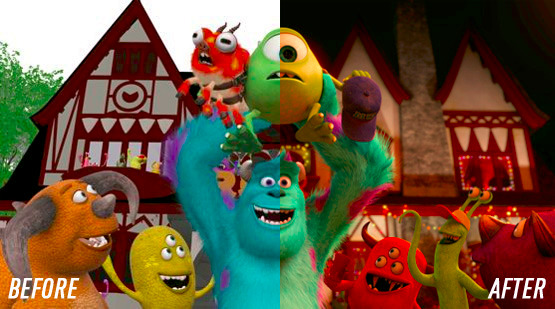

© Soft8Soft
Animation has been around for over a century, and it still holds up as one of the most successful and thriving industries to this day. Today, with our technological advancements, there are numerous forms of animation, but only three main ones: stop-motion, traditional, and computer animation. Traditional animation (often referred to as 2D animation) developed from the idea of stop-motion, which means emulating movement by playing back a series of images of slightly different poses. The first traditionally animated film was called Humorous Phases of Funny Faces, a silent cartoon created by J. Stuart Blackton which was released in 1906. This started the evolution of animation, as people began discovering new techniques and creating their own animations. You can watch the short film below:
Walt Disney founded his own production company in 1923 and successfully released Snow White and The Seven Dwarfs in 1937, marking it as the first traditionally animated feature film in history. Afterward, other studios began developing their own 2D animated films, making 2D animation the most popular form of animation. As the concept of animation gained traction, animators began to experiment with computer animation (also known as 3D or CG animation). The first 3D animation ever was part of Alfred Hitchcock's 1958 film, Vertigo, but computers were never used to create a feature film until 1995 when Pixar released Toy Story. Since then, computer animation has increased in demand, overshadowing the once-popular 2D medium. The rise of 2D and 3D animation have decreased the demand for stop-motion animation (though it still does exist and is enjoyed internationally). However, despite similarities between the two mediums, they are vastly different and require unique skillsets and abilities.

An example of a 3D rig used in animation. © CG Trader
No matter which form of animation you use, you must have a storyboard first. This allows the animators to visualize the concept first, and it also serves as an animator's "blueprint." After storyboarding the story, character designers must draw several versions of the same character in order to choose the best one. Here is where the two mediums vary. In 2D animation, characters are hand-drawn and generally have a more simple look to them in order to make them easier to draw thousands of times. In 3D animation, on the other hand, characters are usually modeled with complex designs as long as they fit the style of the animation. Modeling is the process of molding a shape into a 3D mesh. After modeling your character, you must create or apply proper textures to it in order to create a believable scene. Once a character has been modeled and textured, it must be rigged. A rigged model is any model with a skeleton that has been carefully designed to move its joints. Once these steps are complete, the animators should be ready to start animating.
Both 2D and 3D animation usually use a framerate of 24fps. This means that 24 frames are being played in every second of animation. Although modern software is used in today's 2D animation, the process still remains the same. In 2D animation, the animator draws the character's starting and ending poses in two keyframes. A frame in 2D is simply a drawing in an animation, and a keyframe is a key pose that represents the starting and ending point of the movement. In an animation where a standing character wants to sit down, the drawing with the character standing would be the start keyframe, and the drawing with the character seated would be the end keyframe. Next, the animator can choose between two different methods of animation: Straight Ahead or Pose-to-Pose.
Straight Ahead animation is a more spontaneous approach, in which the animator draws their starting keyframe then moves on to drawing the next frames in sequential order. This means that the animator draws the motion in order in which it happens, not knowing where and how the animation would end up. This approach is usually used when animating an unpredictable movement, such as fire or water. Pose-to-Pose, on the other hand, is a more intricate technique in which the animator only draws the key, defining poses of the animation. These poses help animators visualize the animation and give them better control over timing. Next, an animator known as an in-betweener is given the animation — only consisting of key poses — to fill the gaps between it using in-betweens. In-betweens are drawings that go between keyframes to make the animation smoother and ensure that the character doesn't change shape or volume between the two poses. After drawing in-betweens, the rough animation would be complete. The video below briefly explains two processes:
Unlike 2D animation, 3D animation does not involve drawing. Instead, the animator uses a rigged 3D model of the character, similar to the way one would use a puppet. There are numerous animation programs and techniques when it comes to 3D animation — motion capture, physics engines, frame-by-frame, and path animation are common ones. But when discussing 3D animation, the most common technique involves computer interpolation. The animator imports the model into a 3D environment and selects a keyframe to determine the position that a part of the model needs to be at, which utilizes the basic idea of animation — posing. When animating in 2D, only the parts that appear on screen should be drawn, whereas the entire character must be posed differently even if part of it is hidden in 3D animation. The animator creates two keyframes that are spaced out on the timeline according to how long the movement should take; one keyframe for the start position and the other for the end position. The character should have a different pose in each keyframe.
In 3D animation, unlike 2D animation, in-betweeners don't exist. Instead of a person manually filling in the poses in between the two keyframes, the animation software itself interpolates the frames in between, which is a feature that would save animators a lot of time. However, animators would definitely have to go back and adjust easing graphs if they plan on achieving an acceptable look, since the default movements would look too mechanical and uncanny. Similar to this, some modern 2D animation software supports the same features — which is much more efficient — but viewers often argue that the latter technique in 2D animation makes it lose its hand-drawn feel.
An additional process in 3D animation is camera animation. In 2D, the animator draws the character as it would appear on screen. In 3D however, the entire 3D character is moved around. Therefore, virtual cameras from various angles must be animated according to the instructions given on the storyboard.
No matter which medium you use to animate, there must always be a separate department to handle the finishing touches on the animation. In 2D, the sketchy lines the animators drew must be intricately traced by the tracing department and then sent to the coloring department to be colored and shaded according to the "light source" in the animation. This means that the people coloring in the individual frames must also light and shade the drawings. Now, with modern technology, individual frames don't always need to be colored in. Programs such as Toon Boom can "memorize" where the colors are located and transfer them to the next frame (of course, under human supervision to avoid errors).

Lit and unlit scene. © Pixar
In 3D animation, however, the 3D model would be given color from the start. Therefore, the only thing 3D animators need to achieve in terms of color is lighting and shading. A separate department responsible for lighting must place virtual lamps and light sources that aren't seen in the final animation; they only light the scene and create an atmosphere. This is a very delicate process in which the lights must be carefully placed to create a convincing scene.
Once this process is complete, it's time to render the animation. Rendering a 3D animation is essentially exporting the animation into a long series of images. This is when you truly get to see what your animation would look like. Depending on the complexity of the colors, textures, models, lights, movements, graphs, and length, it could take seconds to hours to days to render a single frame. This is why large production companies such as Pixar and Dreamworks invest in render farms. Render farms consist of hosts of computers (referred to as "nodes") that receive data for the 3D animation from a management software in order to solve complex calculations to convert them into frames. Render farms usually contain tens of thousands of computers, but cloud-based render farms are increasing in popularity in recent years. Once the animation has been rendered, it's ready for the final step.
Disregarding sound editing and similar post-production processes, this is the final step in creating an animation. Both 2D and 3D animated segments require touch-ups and improvements even after they've been exported. In 2D animation, visual effects such as smoke and steam are usually added using 3D animation software, then exported again. Similar to 2D animation, 3D animation also requires some refinements. Some sophisticated animations such as explosions need to be improved using a compositing program. But most of the time, physics engines — software used to simulate motion based on real laws of physics — are used to create these animations before the rendering phase. Other uses of 2D and 3D compositing programs include color correction, splitting, video editing, and synchronization. While 2D would require less editing than 3D, it's not uncommon to find 3D effects in such animations.
In conclusion, both 2D and 3D animation stand as powerful means to tell a story uniquely. While 2D is more suitable for people who can draw and have an artistic nature, it's an industry in decline and the process isn't very efficient when compared to 3D animation. This is because it involves redrawing the same characters tens of thousands of times, whereas 3D animation provides animators with the advantage of 3D models, which can be controlled like puppets. Unlike 2D animation though, 3D animation requires more knowledge of mechanics, mathematics, and physics, as a lot of it requires reading and controlling gradients on graphs. And, depending on the size of the projects, both mediums of animation can be very expensive, though 2D animation would always be cheaper because of the limited equipment needed. Overall, there isn't an easier medium, as each one is unique in its own way.